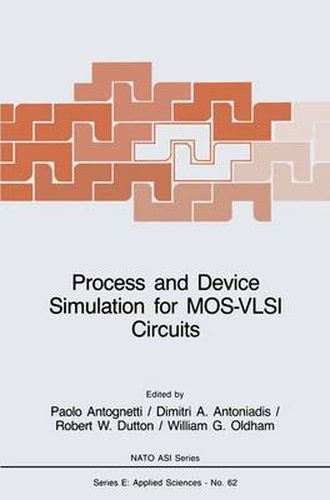Readings Newsletter
Become a Readings Member to make your shopping experience even easier.
Sign in or sign up for free!
You’re not far away from qualifying for FREE standard shipping within Australia
You’ve qualified for FREE standard shipping within Australia
The cart is loading…






This title is printed to order. This book may have been self-published. If so, we cannot guarantee the quality of the content. In the main most books will have gone through the editing process however some may not. We therefore suggest that you be aware of this before ordering this book. If in doubt check either the author or publisher’s details as we are unable to accept any returns unless they are faulty. Please contact us if you have any questions.
P. Antognetti University of Genova, Italy Director of the NATO ASI The key importance of VLSI circuits is shown by the national efforts in this field taking place in several countries at differ ent levels (government agencies, private industries, defense de partments). As a result of the evolution of IC technology over the past two decades, component complexi ty has increased from one single to over 400,000 transistor functions per chip. Low cost of such single chip systems is only possible by reducing design cost per function and avoiding cost penalties for design errors. Therefore, computer simulation tools, at all levels of the design process, have become an absolute necessity and a cornerstone in the VLSI era, particularly as experimental investigations are very time-consuming, often too expensive and sometimes not at all feasible. As minimum device dimensions shrink, the need to understand the fabrication process in a quanti tati ve way becomes critical. Fine patterns, thin oxide layers, polycristalline silicon interco~ nections, shallow junctions and threshold implants, each become more sensitive to process variations. Each of these technologies changes toward finer structures requires increased understanding of the process physics. In addition, the tighter requirements for process control make it imperative that sensitivities be unde~ stood and that optimation be used to minimize the effect of sta tistical fluctuations.
$9.00 standard shipping within Australia
FREE standard shipping within Australia for orders over $100.00
Express & International shipping calculated at checkout
This title is printed to order. This book may have been self-published. If so, we cannot guarantee the quality of the content. In the main most books will have gone through the editing process however some may not. We therefore suggest that you be aware of this before ordering this book. If in doubt check either the author or publisher’s details as we are unable to accept any returns unless they are faulty. Please contact us if you have any questions.
P. Antognetti University of Genova, Italy Director of the NATO ASI The key importance of VLSI circuits is shown by the national efforts in this field taking place in several countries at differ ent levels (government agencies, private industries, defense de partments). As a result of the evolution of IC technology over the past two decades, component complexi ty has increased from one single to over 400,000 transistor functions per chip. Low cost of such single chip systems is only possible by reducing design cost per function and avoiding cost penalties for design errors. Therefore, computer simulation tools, at all levels of the design process, have become an absolute necessity and a cornerstone in the VLSI era, particularly as experimental investigations are very time-consuming, often too expensive and sometimes not at all feasible. As minimum device dimensions shrink, the need to understand the fabrication process in a quanti tati ve way becomes critical. Fine patterns, thin oxide layers, polycristalline silicon interco~ nections, shallow junctions and threshold implants, each become more sensitive to process variations. Each of these technologies changes toward finer structures requires increased understanding of the process physics. In addition, the tighter requirements for process control make it imperative that sensitivities be unde~ stood and that optimation be used to minimize the effect of sta tistical fluctuations.